How to Fertilize a Dipladenia: Our Formula – Sembrar100
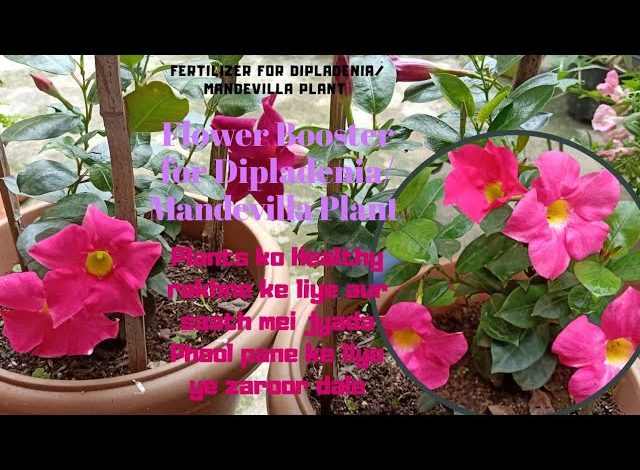
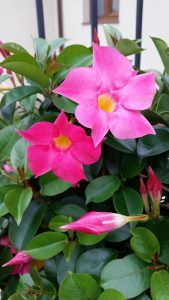 How beautiful it is to enjoy a space with a vine plant that also offers spectacular blooms in its time!
How beautiful it is to enjoy a space with a vine plant that also offers spectacular blooms in its time!
That is exactly what dipladenias give you and that is why they have become such popular plants, even though their place of origin is in America.
The fact is that to achieve this result as you imagine it in your gardening dreams, the plant must be in perfect health.
And yes, that implies that you pay close attention to the issue of fertilizer for dipladenia and everything that this process implies. We’ll talk about it right now. Do you want to join us?
Why is it important to fertilize dipladenia?
Dipladenias are fertilized with a view to achieving two key objectives: a healthy plant and beautiful flowering.In the first case, the nutrients will be those that help the structure of the dipladenia to be in optimal conditions, remaining vigorous.
This helps them grow firmly and is also capable of offering resistance to the possible arrival of pests or diseases.
When we speak in terms of flowering, the fertilizer for dipladenia will be the one that will help more flower buds to come out and develop properly. As a result, you will get a beautiful plant with that spectacular contrast between the green of the foliage and the color of the flowers that motivates so much.
And this will not be in a single moment, but a well-nourished dipladenia will offer constant blooms throughout the entire period.
How often should we pay the dipladenia?
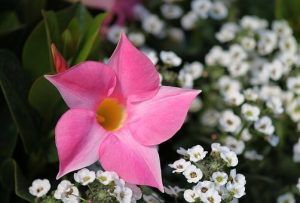 The fertilization period will occupy from spring to summer, including the entirety of this season.
The fertilization period will occupy from spring to summer, including the entirety of this season.
The applications must be made every 15 days, incorporating them into the normal irrigation processes.
In case you plan to work a post-flowering pruning during the autumn months, it is worth fertilizing to give the plant resistance.
This will help it recover more easily and face winter without many complications.
What nutrients do dipladenias need?
The fertilizer you choose to use must have a balanced amount of macro and micro elements to achieve the appropriate levels inside the plant. Here are counted: nitrogen (N), phosphorus (P), potassium (K), copper (Cu), iron (Fe), boron (B), manganese (Mn), zinc (Zn) and molybdenum (Mo).
In the early stages of growth, nitrogen is the one that will play a more prominent role and after the winter vegetative shutdown as well.
This is because nitrogen is what helps the green parts of the plant to develop as it should. For its part, in the flowering stage as such, the most essential resources are potassium and phosphorus.
So that the colors of the foliage and leaves are dreamy and offer the incredible contrast you are looking for, ensure good levels of iron.
What type of fertilizers do dipladenia need?
The versions to be diluted in water are the most recommended for fertilizing dipladenias because they facilitate both the action on your part and the absorption by the plant. These come together in fertilizers for flowering plants, since it is exactly the type of plant that dipladenias are.
The best thing is that you opt for those fertilizers with an organic or mineral composition, leaving aside synthetic fertilizers.
For certain cases, complex fertilizers are the most recommended because they will define exactly the type of nutrient you want to apply and the amount.
You can also use the organic fertilizers that you make at home, although they are recommended above all at the beginning of the crop. These are not designed to promote abundant blooms, but to fully nourish the plants, which is why they are often preferred for other plants, such as fruit trees.
How do we prepare fertilizer for dipladenia?
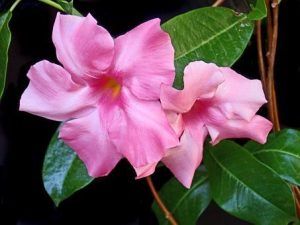 If you choose a water-soluble fertilizer, you will only have to mix it with the irrigation water and apply it to the plant as if it were a normal irrigation.
If you choose a water-soluble fertilizer, you will only have to mix it with the irrigation water and apply it to the plant as if it were a normal irrigation.
This action will be quite simple and will not carry any risk, unless you use more amount of fertilizer than you should. It is used in the same way with complex fertilizers, if that is the case.
Before planting the dipladenia, you have the possibility of improving the conditions of the substrate by applying a homemade organic fertilizer.
The most convenient method is to open a hole in the space that you will use to plant and apply the fertilizer there, stirring later with the soil to homogenize.
How do we detect if the dipladenia need fertilizer?
To become an expert in the nutritional assessment of dipladenia, you must have them very well monitored, because that is what will allow you to react.In the foliage that grows slowly, with little vigor and with yellowish tones (as if it were the product of a drought), a low level of nitrogen may be manifesting.
In the event that the flowers are affected and do not show such a striking structure, it will be necessary to resort to a greater contribution of potassium and phosphorus.And if the iron levels are the ones that are failing, the plant will have problems with the colors, and iron chlorosis may occur.
This is a disease that consists of the change of color of the leaves, which turn yellow although the nerves remain green. A dipladenia that is a frequent victim of disease or pest damage may also be low in nutrients.
This is important to know because it means that dipladenia is not being able to offer adequate resistance. Fertilizer for dipladenia is one of the most important «demands» that this species has. It happens that in exchange for your nutritional contribution, she will give you a beautiful bloom to decorate that space you have given her.
After all, it is most likely that this is the objective you were looking for when planting it and the time has come for you. Plan your fertilization processes well and then just dedicate yourself to contemplating the wonderful gift that this climber is capable of offering us all.
Bibliographic references
- The species of the genus Mandevilla Lindl. (Apocynaceae) cultivated in Spain, JMS de Lorenzo-Cáceres – Ann. Missouri Bot. Gard, 1932 – ornamentaltrees.es
- The family Apocynaceae s. str. (apocynoideae, rauvolfioideae) in Uruguay, JF Morales – Darwiniana, 2010 – JSTOR
- Studies in the neotropical Apocynaceae XIX: the family Apocynaceae s. str. (Apocynoideae, Rauvolfioideae) from Costa Rica, JF Morales – Darwiniana, 2005 – JSTOR
- Review of the Apocynaceae of Argentina, C Ezcurra – Darwiniana, 1981 – JSTOR
Maybe you are also interested in:


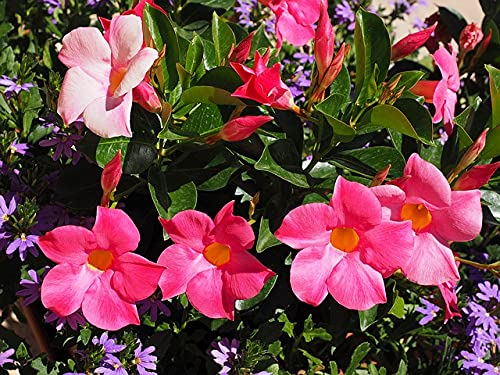

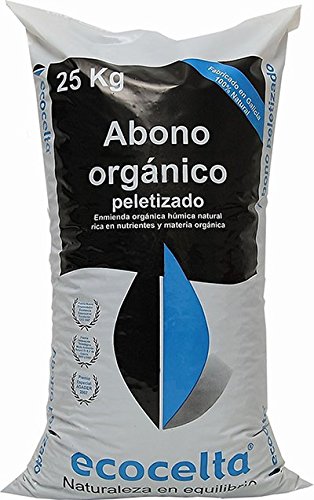
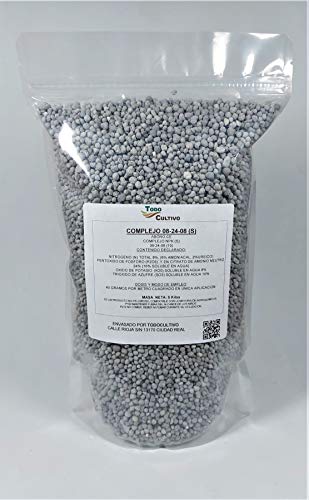
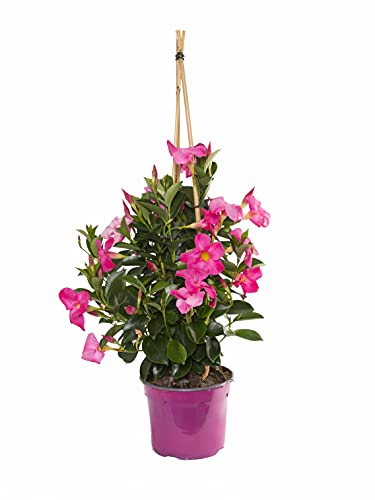
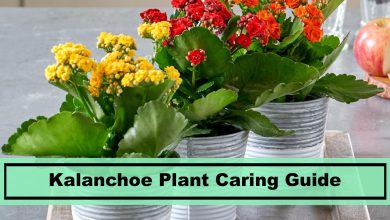
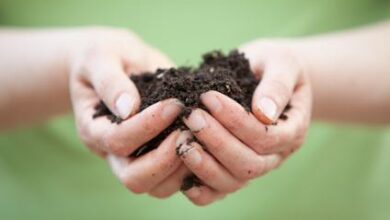
![Photo of Holly Cuttings: [Concept, Period, Rooting and Planting]](https://www.complete-gardening.com/wp-content/uploads/2022/08/holly-cuttings-concept-period-rooting-and-planting.gif)
![Photo of Thistles: [Cultivation, Irrigation, Associations, Pests and Diseases]](https://www.complete-gardening.com/wp-content/uploads/2022/08/thistles-cultivation-irrigation-associations-pests-and-diseases-390x220.png)